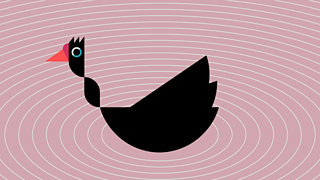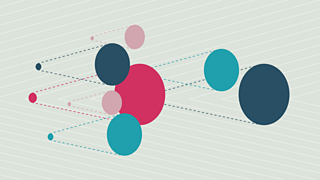Designers need glasses
As a designer in a public service organisation, I often explore new ways to look ahead.
Technology is increasingly more complex and powerful. And something interesting is happening to our discipline lately: with agile development loops becoming faster, data becoming ubiquitous, and incremental iterative practices starting to become automated, design can disappear into the mechanics of feature development. And, in the process, its foresight is shortening.
This creates a gap between the applications we design today and the implications that might arise tomorrow. This is a big issue for everyone, but especially for those working in the public sector.

Look mum! A black swan
Today, we're experiencing the feeling of rapid change. Once upon a time, or January as we used to call it, the world was very different from now. Looking in the rear-view mirror now, we can see that all the signs of what was about to unfold were already there.
But even though experts had warned us, we were not prepared for COVID-19.
A genuine, proper event. As old norms are ripped from their foundations, the future feels even more uncertain and difficult to predict, and perhaps what's just happened feels inevitable in hindsight.
Is future thinking a futile activity when stuff like this happens? Quite the opposite. If there's one lesson to take away from the pandemic, it's the importance of looking ahead.
And not just 'looking ahead', but 'feeling ahead'. By imagining together in structured ways, and creating the experience of change before it happens, rather than while it's happening, we have a hope of planning, and even affecting our future.
Public imagination

Our brains are funny machines. In the far away January they would have deemed the current state of the world as 'totally implausible', and yet in the last few months they have quickly adapted and modelled around a 'new normal'. The pandemic is teaching us an important lesson: what's unimaginable is contextual and situational, not absolute.
This concept that 'the unimaginable is situational', is expressed by (Director of and Associate Professor in the ), in one of his essays around .
He argues that we have impoverished our ability to collectively imagine an adequately divergent and far fetched set of scenarios. In other words, we need to think the unthinkable together, especially for important issues in the public domain like governance, healthcare, and the environment.
If we are to create public services that enrich and empower UK and worldwide audiences, we need to gain back the ability to imagine the future, and influence it for public good.
That essay inspired me to invite Stuart to help us design and run the Futures Bazaar experiment.
Futures for sale!

Almost exactly one year ago, in what now looks like the ultimate social distancing nightmare, we gathered our entire design department, plus a few guests, for a day of 'collective dreaming' to the Royal Albert Hall in Manchester. We experimented with practices, imagining a variety of alternative futures, and bringing them back into our material reality through design.
The outcome was a Futures Bazaar, a Star Wars-esque collection of fictional artefacts coming from multiple futures, each specifically designed to ask a question, or provoke debate.
A bazaar is like a hive brain (an idea well expressed by seminal essay about open source coding ): each stall is totally independent from each other, and yet together they form an organism where mundane meets the weird and wonderful. It was the perfect metaphor to simultaneously explore the idea of future plurality (there are many paths forward available) while doing so through artefacts that had the metaphorical freedom to be playful and a bit 'out there' (a bazaar, afterall, is a place where you find the wacky phone cover alongside the fancy knock-off, as opposed to the shiny products found in a supermarket or department store).
The idea behind such activity was to 'lower the bar' to future thinking, and to introduce the team to a seemingly obvious, and yet hard to grapple with idea: that the future hasn't happened yet, that we can play an active role in shaping, but that before we can collectively choose what should happen, we ought to explore what could happen.
The Futures Bazaar wasn't an exercise of prediction. But gave us a structure for imagining together. It was a small step in a much bigger journey that we're taking to give design a new pair of glasses. To take back the ability to imagine our public future together.







